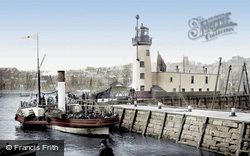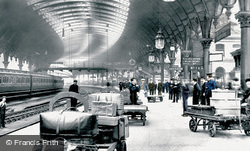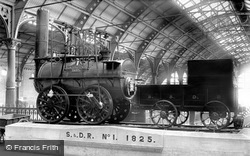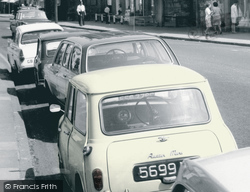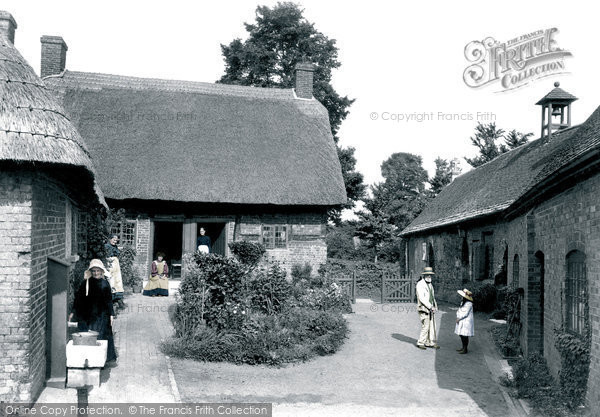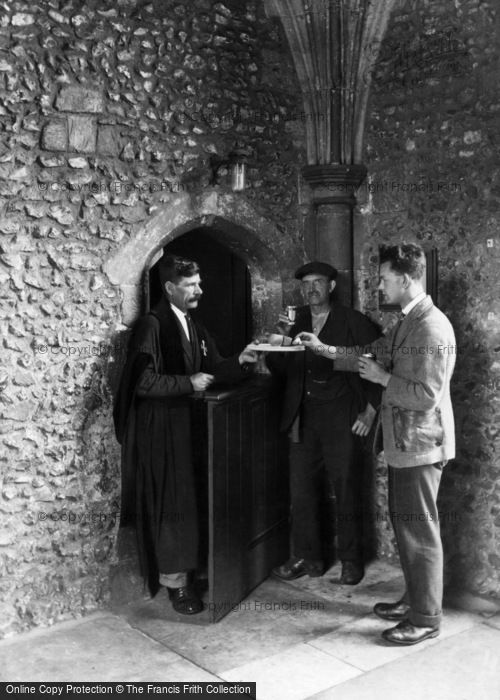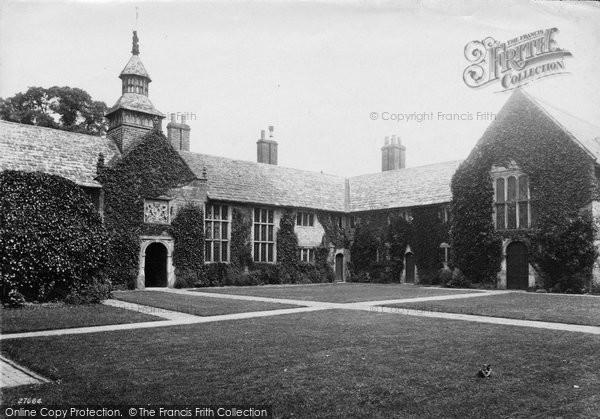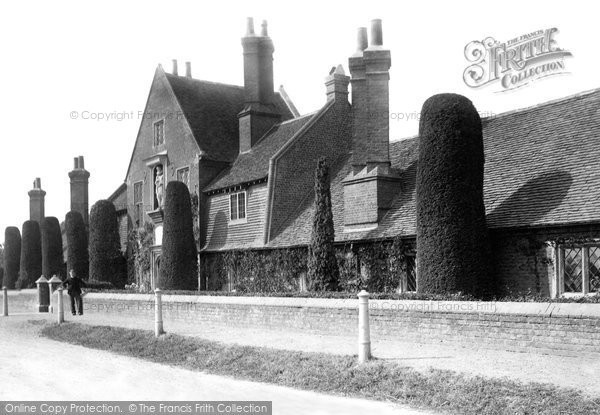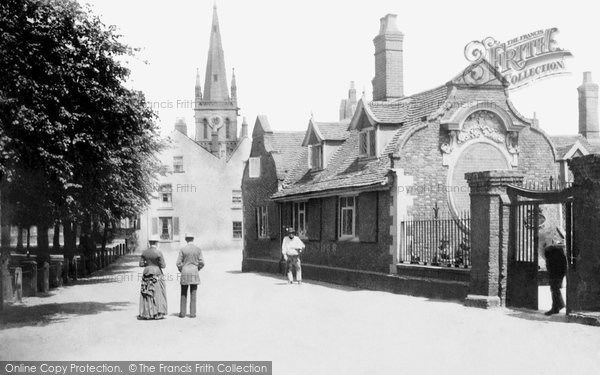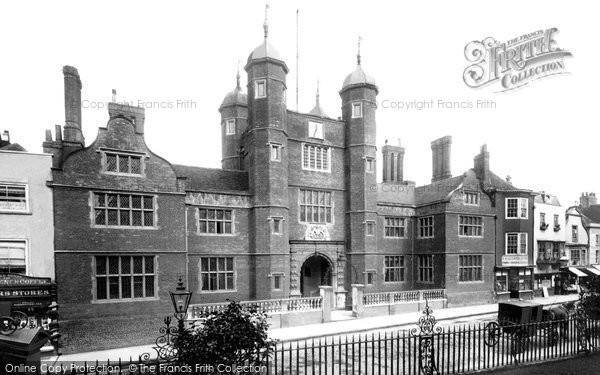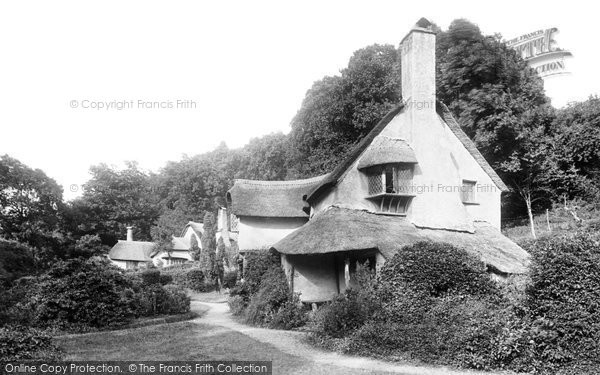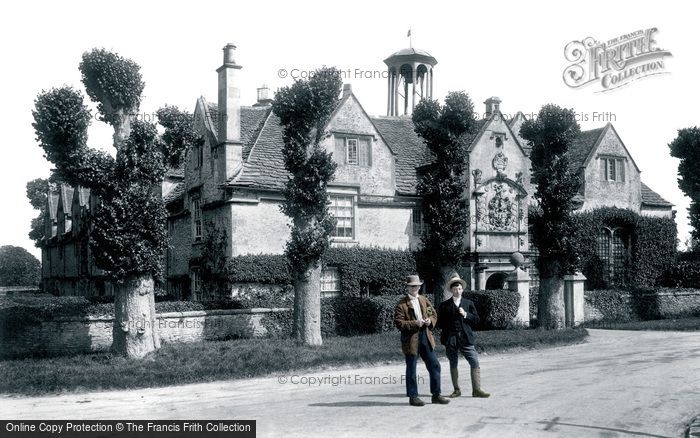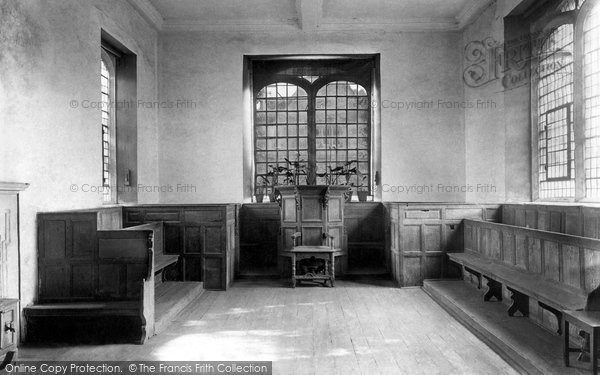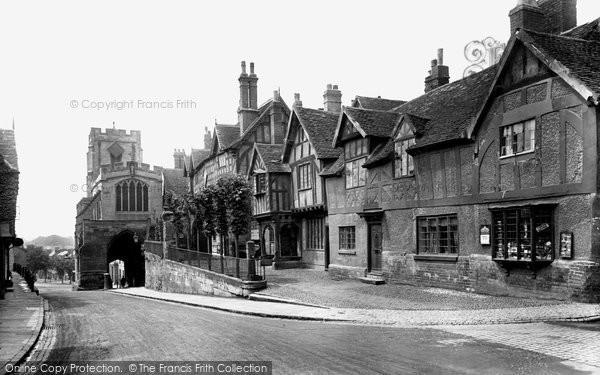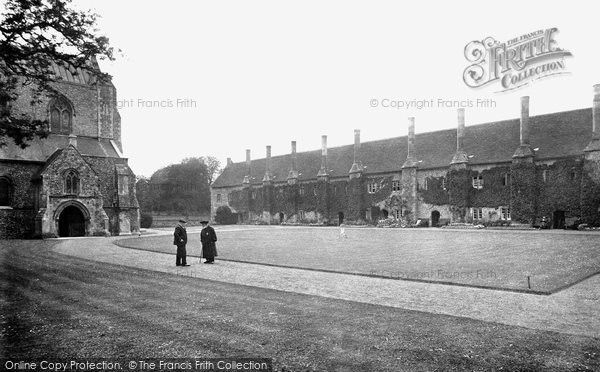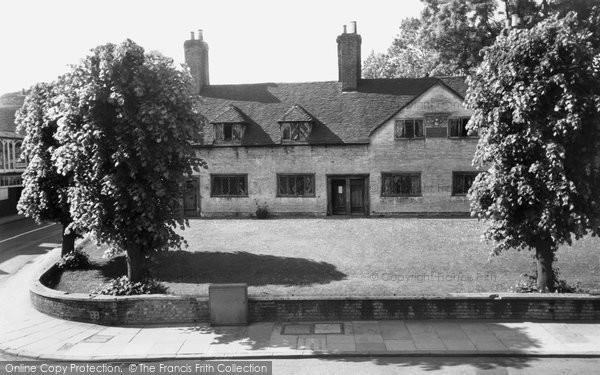Almshouses
Published on
March 13th, 2018
Picturesque old almshouses can be seen in many towns and villages around Britain. Before the days of Old Age Pensions and retirement homes, almshouses were set up by the church or charitable institutions, or established with a bequest by a wealthy benefactor, in order to provide accommodation for the poor and needy, usually elderly people of the parish. As such, they functioned as an early form of sheltered housing. Almshouses were also often known as hospitals in the Middle Ages.
The first recorded almshouse in Britain was founded in York in 936 AD by King Athelstan, the grandson of Alfred the Great; the oldest still in existence is the Hospital of St. Cross in Winchester, which dates from the 1130s. We hope you enjoy this special selection.
St Margaret's Chapel and Almshouses on the outskirts of Wimborne in Dorset began as a leper hospital, possibly founded by Robert Fitz-Parnell, who was himself a leper, whose brother Robert, Earl of Leicester, held Kingston Manor from 1190 to 1204. More recently it was a retirement home for servants of the Bankes family, owners of the Kingston Lacy Estate just outside Wimborne until 1981. The 14 almshouses date from the 16th-19th centuries. The woman (left) is wearing a traditional Dorset bonnet.
The Hospital of St Cross near Winchester was founded by Bishop Henry de Blois in 1136, and is the oldest almshouse in England. It was originally founded to provide for the daily feeding of 100 poor men, and to house, clothe and feed ‘thirteen poor impotent men, so reduced in strength as rarely or never to be able to raise themselves without the assistance of another’. By the rules of the foundation of St Cross Hospital, for eight centuries travellers have been given bread and ale on demand – a custom known as ‘the Wayfarer’s Dole’. Even today, if you visit St Cross Hospital and ask, you will be given a portion of bread and a beaker of ale by one of the porters.
East Grinstead was founded in the early 13th century as a medieval ‘new town’. No houses from the earliest town survive, but a number from the 14th and 15th centuries still stand along the High Street in one of the longest stretches of medieval buildings in the country. The Sackville family, the Earls of Dorset, owned most of East Grinstead for centuries. Sackville College at the eastern end of the High Street was endowed as an almshouse in 1608 by Robert Sackville, 2nd Earl of Dorset, and still serves that function today. The Warden of Sackville College from 1846 until his death in 1866 was the Reverend John Mason Neale, who was a noted hymnologist – his best-known work is probably the Christmas carol ‘Good King Wenceslas’, written at East Grinstead in 1854.
This shows Jesus Hospital at Bray in Berkshire, a fine quadrangle of 28 single-storey almshouses with a taller entrance bay. A stern notice in the entrance archway states that 'Vagrants, Hawkers and Dogs Are Not Admitted'. It was founded in 1627 by William Goddard, a local man made good as citizen of London and member of the Fishmongers Company. He is commemorated with a statue and his monument is in the church.
The Fishermen’s Hospital at Great Yarmouth is one of the few surviving old buildings in the town. The hospital was founded in 1702 as an almshouses establishment that could accommodate up to twenty former fishermen, who were either disabled or over 60 years old, and their wives. However, if a fisherman died, his widow had to leave the hospital – unless she could persuade one of the other fishermen there to marry her! The Fishermen’s Hospital is a series of 20 small cottages, each with one room downstairs and a bedroom built into the roof.
The name of the George Abbot public house in Guildford commemorates the son of a local cloth worker, born in Guildford in 1562, who served as Archbishop of Canterbury from 1611 until his death in 1633. In 1619 Archbishop Abbot founded his Hospital of the Blessed Trinity in the town, an almshouse to provide accommodation for twenty elderly residents of Guildford. The Hospital still discharges its original function, through the conditions of entry have been modified. Abbot’s Hospital is one of Guildford’s most beautiful buildings and one of the best examples of Tudor-style brickwork in the country. Archbishop Abbot’s elaborate tomb – a Jacobean fantasy of skulls and books, with the archbishop portrayed life-size in marble – is in Holy Trinity Church in the High Street, opposite the Hospital.
These delightful thatched houses in the village of Selworthy in Somerset were adapted from medieval farmhouses n the 1820s as almshouses for pensioners on the Holnicote estate. The Holnicote Estate was later gifted by the Acland family to the National Trust, to which many of the village’s thatched cottages now belong – their preservation is thus assured.
An architectural treasure of Corsham in Wiltshire is the complex of Lady Margaret Hungerford Almshouses and Schoolroom at Pound Pill. The widow of Sir Edward Hungerford of Corsham Court who commanded the Parliamentarian forces in Wiltshire during the Civil War, Lady Margaret founded and endowed the almshouses in 1668 to shelter six poor people (later increased to eight) whilst the school provided free education for ten needy children. The almshouse complex is open to the public as an example of social provision in the past, including the old schoolroom, complete with its original 17th-century furnishings; as well as box pews and benches for the pupils, these include the imposing pulpit desk where the master sat at a vantage point high above his pupils, with an unusual assistant master’s seat built into its front.
The only remaining parts of the medieval town walls which once surrounded Warwick are the east and west gatehouses. This photograph shows the Westgate, which was once known as the hanging gate, as convicted felons were hanged here. The range of beautiful medieval buildings by the Westgate of Warwick seen in this view) was originally the Guild House of St George and the Blessed Virgin. In 1571 Robert Dudley, Earl of Leicester acquired the buildings and transformed them into a ‘hospital’ (almshouse) for 12 old and disabled ‘brethren’ – usually ex-servicemen; the Hospital still serves this function.
One of the few surviving historic buildings in the modern town of Basingstoke is the row of eight white-painted cottages known as Deane’s Almshouses at the eastern end of London Street, on the corner with New Road. They are named after their founder, Sir James Deane, who gave the money for them to be built in 1608 as homes ‘for 8 poore impotent old men’. The almshouses, now listed buildings, are managed by a group of Trustees and still fulfil their original function as housing for older people.
Perhaps you'd like..?
If you liked our "Almshouses" Blog Feature, you might like to see and follow this
Francis Frith board over on Pinterest.
This post has the following tags:
Places,Nostalgia.
You may find more posts of interest within those tags.
Join the thousands who receive our regular doses of warming nostalgia!
Have our latest blog posts and archive news delivered directly to your
inbox.
Absolutely free. Unsubscribe anytime.

